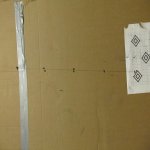Im currently trying to figure out the most precise way to ensure level between a new scope and rifle, and ensure level of an added scope level bubble.
Regarding the former, from what read so far most systems seem to consist two individual levels placed separately on the rifle and scope. Eyeballing a bubble seems a little imprecise to me, especially when trying to push out to very long ranges. I've also seen the wedge systems as well. Anyone willing to speak to the accuracy of either method? Is there something more precise out there that I'm missing?
As far as scope levels, I've always done it by lining up the reticle to a plumb line, and then ensuring the bubble was level before tightening. This has worked fine at closer ranges but I am thinking any imperfections will really start to show at further ranges. I did see mention of another electronic system but I don't think it's available outside of the US yet. Anything I'm missing?
Regarding the former, from what read so far most systems seem to consist two individual levels placed separately on the rifle and scope. Eyeballing a bubble seems a little imprecise to me, especially when trying to push out to very long ranges. I've also seen the wedge systems as well. Anyone willing to speak to the accuracy of either method? Is there something more precise out there that I'm missing?
As far as scope levels, I've always done it by lining up the reticle to a plumb line, and then ensuring the bubble was level before tightening. This has worked fine at closer ranges but I am thinking any imperfections will really start to show at further ranges. I did see mention of another electronic system but I don't think it's available outside of the US yet. Anything I'm missing?









































































